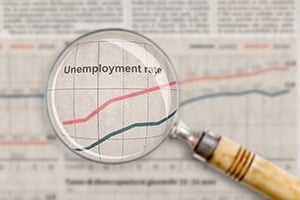 Following up on some of my previous posts, it seems clear that something has changed in the workplace. That somehow, the consensus that dominated both employers and workers pre-pandemic has now broken. The question is, what could that be? Will it go back to where it was? Or will this new world of labor shortages due to people choosing not to work persist?
Following up on some of my previous posts, it seems clear that something has changed in the workplace. That somehow, the consensus that dominated both employers and workers pre-pandemic has now broken. The question is, what could that be? Will it go back to where it was? Or will this new world of labor shortages due to people choosing not to work persist?
What’s Trending?
There are three underlying trends here, which we need to understand to get a handle on this issue. The first is demographic. When you look at the next 10 years, we can see the current labor shortage getting even worse. With a shortage of available workers, we can reasonably expect wages to keep rising faster than inflation—a continuation of a trend I talked about here. From a demographic perspective, then, labor shortages are likely to persist, driving wages higher, over a multiyear time period. We are not going back to the pre-pandemic normal any time soon.
Even so, that doesn’t seem to account for the shortages we are seeing now. So, we need to look at the other components beyond the demographic ones. The first is, of course, the pandemic itself. At least some people are worried about being exposed to COVID and are unwilling to work for that reason alone. Another, and one of the most commonly cited, is the federal unemployment payments, which have now expired. A third is the need to care for children, for the elderly, or for people who have COVID. All valid reasons.
One more potential reason, which I have been thinking through, is that as wages rise, the ability for families to make it on one income becomes much more possible. For many working parents, especially in the lower-income tranches, the net income from work after accounting for costs and childcare is quite small. Given that, if one partner gets a higher-paying job, then it becomes very possible for the other to stay home without much, if any, sacrifice in net income. Given that women shoulder most of the home burden, that would explain why so many have stayed out of the labor force—and indicates that as long as real wages remain high for at least one partner, that scenario is unlikely to change.
What Does the Data Say?
There are lots of possibilities, but the real problem with trying to quantify all of this has been the lack of data. Today, however, I saw a very interesting compilation of several surveys on Indeed.com’s Hiring Lab page.
The survey covers the past four months, to measure the changes in why people are not looking for work. And the answers closely parallel what we discussed above. COVID fears were the major factor in June and have become significantly less important, but they are still there. Unemployment insurance, perhaps surprisingly, has always been relatively unimportant, although it certainly contributed to the financial cushion reason, which is important. All of these, however, are likely to pass over time as COVID eventually fades and the financial cushion is spent down.
The two survey answers that are likely to continue over time, and therefore to have the most effect on future labor supply—whether people will return to work—are whether the spouse was employed and care responsibilities. Both of these tie directly to my points above, and both will persist over time and even become more important. This is what will drive whether people return to work in the future.
A Fundamental Change?
When you consider it, this will make the headwind for the labor supply worse over time. Millennials are now having children, and care needs will not go away. As boomer parents get older, ditto. Child and elder care will become an increasingly important reason why one partner may not want to work outside the home. And as wages continue to rise as the labor market stays tight, the ability of one partner’s income to support the family will rise, making the incentive for both partners to work even weaker. In other words, even as the number of jobs will keep rising, the number of workers will decline. It’s not just the pandemic. It’s not just the demographics. It is a fundamental change in the labor market and how people respond to it.
Back to the 1950s?
In fact, in many respects, it looks like it could end up being a return to the 1950s, when single-earner homes were normalized on TV. That was never the case for many families, of course, but it has been held up as an ideal. For most people in recent decades, that ideal simply has not been possible. But as real wages rise, that single-earner household will become possible for a wider range of people—and that will keep hitting the labor supply.
This shift will be great for families. For the labor market? Not so much. From a policy perspective, once again, it looks like a case of be careful what you wish for, as there will certainly be unexpected consequences.


 Print
Print

